Prefer to listen to this piece?
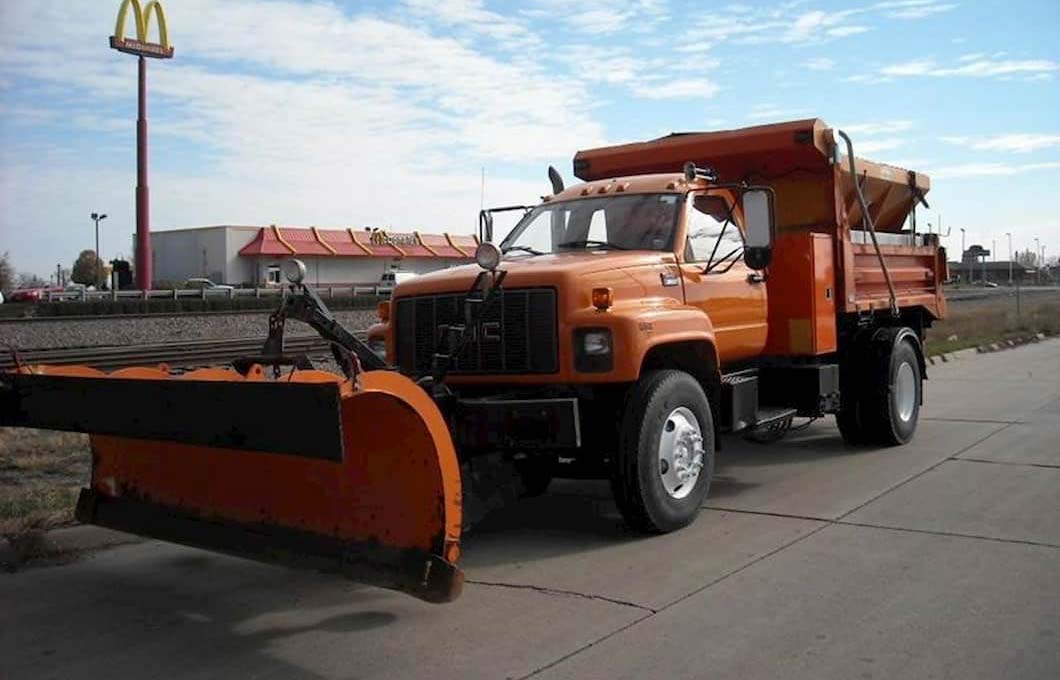
Quick Contents
When it comes to spreading ice-melting substances on roadways and parking lots, spreader trucks are usually the most efficient types of equipment for the job. A spreader truck—also known as a salt spreader or sand spreader truck—is a truck outfitted with a mechanism designed to spread "ice melt" substances such as sand, rock salt, and other material mixtures wherever snow and ice management is needed. Many spreader trucks are also outfitted with snow plows, allowing them to work double duty on municipal streets. City workers and contractors have used spreader trucks on roads and other surfaces for decades.
We'll discuss the various differences in spreader trucks a little bit later. For now, let's answer some of your ice melt substance questions.
Most commercial spreader trucks spread a product called "ice melt"—a blend of seven chemicals that melt ice and snow:
- Sodium Chloride (Rock Salt)
- Calcium Chloride
- Magnesium Chloride
- Calcium Magnesium Acetate
- Potassium Acetate
- Blended Calcium
- Organic and non-organic filler liquids
Depending on the environment, temperature, level of ice, and budget, the amount of each of these materials will vary within a particular area's ice melt blend.
Ice melt comes in a wide variety of chemical blends, each with its pros and cons—such as price difference and impact on a particular environment. Snow and ice maintenance professionals should choose an ice melt material with an appropriate “melting temperature”—the lowest temperature that the ice can be melted. The effectiveness of the ice melt spread material should remain in balance with how it could potentially corrode materials or harm animal or plant life. So, instead of asking "what is the best ice melt?" a better question would be "what is the right ice melt for my area?" to come to a better conclusion.
Since choosing an unsuitable ice melt means that snow and ice will still be able to form, this is one of the most important decisions you’ll be making.
When it comes to an overall crowd favorite, sodium chloride (rock salt) blends are the most popular ice melt substances. It’s relatively cheap with most blends capable of melting ice around 25° F—depending on the blend. For extremely cold weather, ice melt blends with increased magnesium chloride levels can melt ice that’s as cold as -15° F and ice melt with higher calcium chloride can melt ice as cold as -25°F.
Sodium chloride (rock salt) blends remain popular due to their relative effectiveness-to-price ratio for most snow and ice management needs.
Ice melt also comes in different-sized granules or particles—each with strengths and weaknesses.
Large Ice Melt Pellet GranulesMunicipal spreader trucks typically use large-particle-ice-melt with granules capable of sinking into deep snow all the way to the ground surface. These larger pellet-sized ice melt granules can end up being more dangerous after the ice has melted as they become slipping hazards, much like small pebbles.
Small Ice Melt ParticlesSmaller, more refined ice melt particles and can be spread farther, tend to be less corrosive, and pose less of a slipping hazard later. Still, smaller particle ice melt substances can be more expensive while not penetrating snow as deeply as large-particle blends.
A calcium chloride based ice melt is the most popular choice for melting ice on concrete roadways and parking lots. Calcium chloride does not damage concrete or brick. While calcium chloride is fairly safe for concrete, it can still corrode steel—which may be a concern in areas where there is exposed rebar, such as in parking garages. For areas with exposed steel, a higher magnesium chloride tends to be the safer option—though most ice melt mixtures will have some degree of corrosive qualities to steel.
Certain chemicals in ice melt can seep into the groundwater and cause environmental problems—such toxicity to animals and plant life. Fortunately, the best ice melt brands for commercial outdoor use have been investigated and ranked and rated by the Environmental Protection Agency, who have included
a full list of deicers and ice melts they consider environmentally safe. In general, magnesium chloride is less harsh on grass than bulk rock salt.
Sand does not melt ice and is only spread on ice to provide additional traction. It many regions, sand may be mixed with ice melt to provide traction to roadways as the substance melts the ice. Spreading sand from a spreader truck can be useful in extremely cold regions to provide traction to the surface of roadways with thick ice.
Larger granule sand is the best for applying traction to ice. This type of sand may be commonly known as "play sand"—such as the kind found in children's sand boxes. Finer grain sand, such as mason's sand, will be much too fine to provide adequate traction.
The right spreader truck depends on what substance you are spreading and the size of the job.
Larger Spreader Trucks vs. Smaller Spreader Trucks
A large spreader truck can carry as much as 8,000 pounds of spreading materials, which means it can keep going a long time before needing a refill. However, such spreader trucks are not very fuel efficient and can be harder to control on narrow roads with tight corners, making them less effective for smaller jobs. On the other side of the coin, smaller spreader trucks are much more nimble and fuel efficient, but may require frequent material refills due to their limited material handling capabilities.
Hopper Spreader Trucks
Sometimes resembling a dump truck, a hopper spreader has the greatest capacity. Its design allows for more precise control over how much material is distributed. Hopper spreader trucks come with either gas or electric powered hopper motors—depending on how loud, quiet, or environmentally friendly the preferences happen to be.
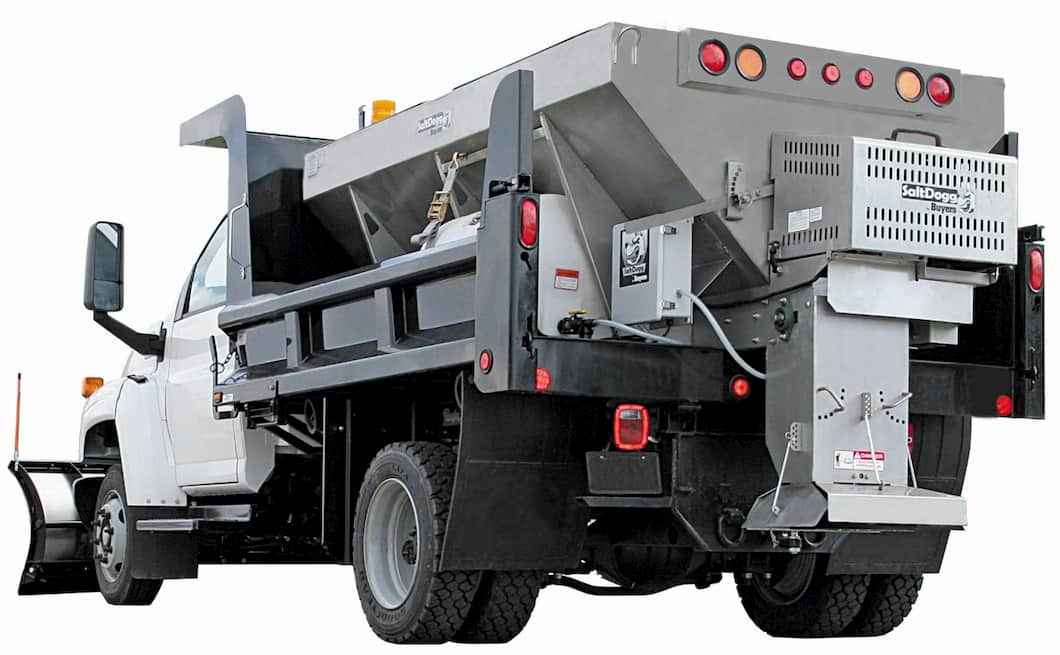
Tailgate Spreader Trucks and Equipment
Typically mounted on the back of a multi-use truck (such as a pickup truck) a tailgate spreader ejects its material simply using gravity. The material feeds onto a spinning disk equipped with blades that distribute the material in a relatively even fashion. Due to this more energy efficient and more hands-off distribution, tailgate spreaders offer less control over the distribution of materials. Tailgate hoppers are generally better-suited for residential applications, such as neighborhoods, where a large spreader truck would be harder to maneuver. Consequently, its smaller size means that it can’t spread larger-granule materials very effectively.
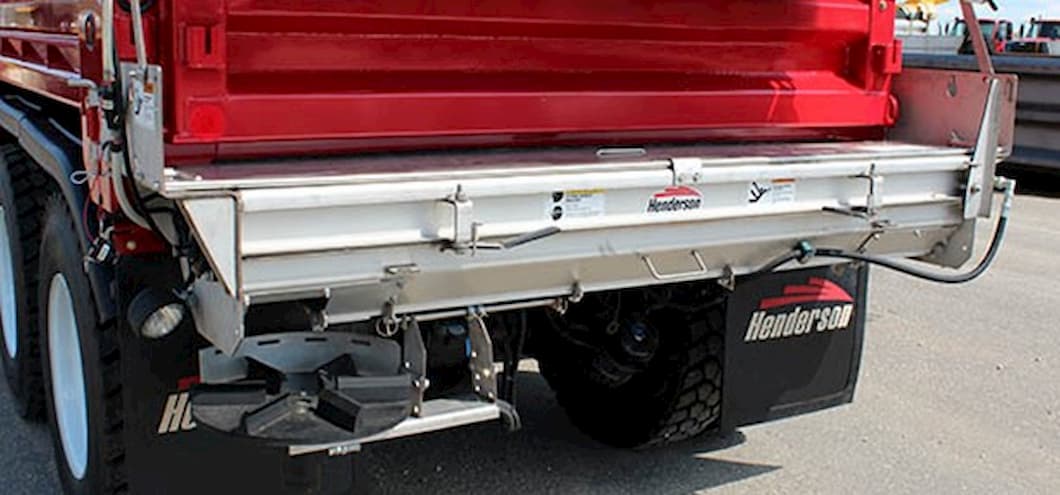 A tailgate spreader has less control than a hopper spreader, but also less parts, so it’s easier to maintain.
A tailgate spreader has less control than a hopper spreader, but also less parts, so it’s easier to maintain.
A large snow plow truck needs to use a conveyor feeding system to eject its materials. These feeding systems can either be auger or pintle.
Auger Feeding SystemsAuger spreader trucks have an industrial vibrator to help move the product. They tend to offer the most even material distribution and work especially well with salt. On the other hand, materials that get wet easily—such as sand—tend to clump against the auger.
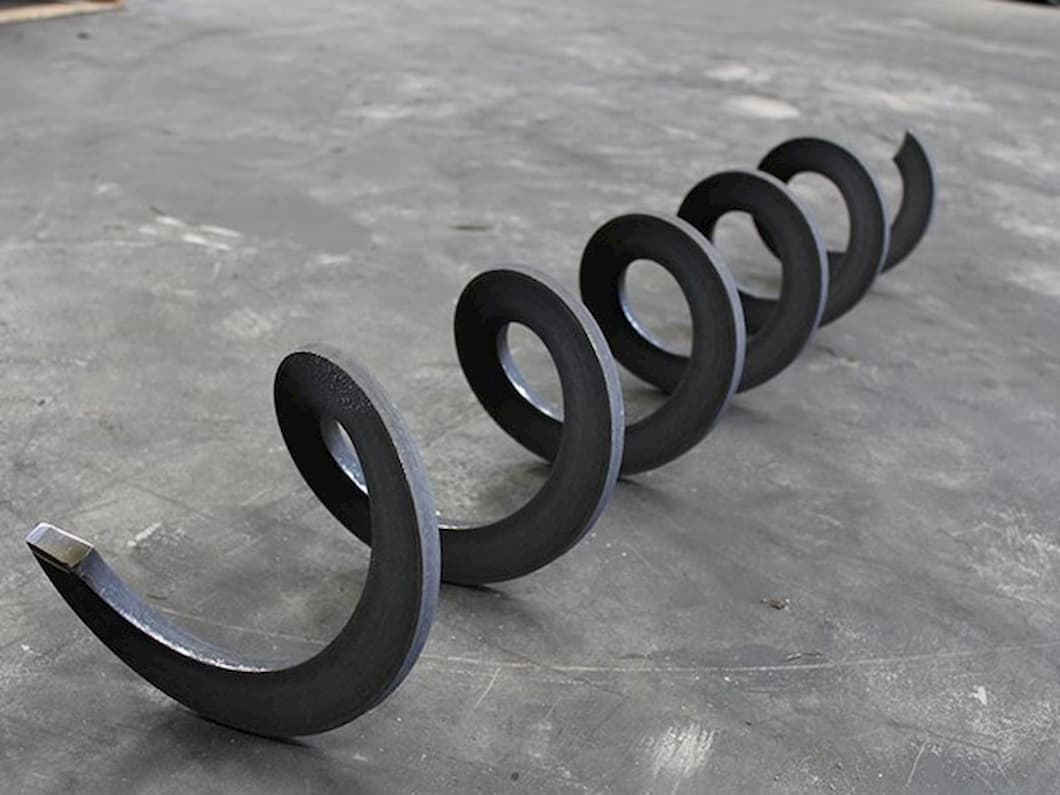 The auger feeding system pushes materials out with a spiraling motion.
The auger feeding system pushes materials out with a spiraling motion.
Pintle Feeding System
Pintle spreaders drag the sand or ice melt material along using a powerful chain. This chain is especially good for catching wet materials that clump together. Though efficient, there may be instances in which a pintle chain’s jerking motions may fail to distribute the product in even amounts. Pintle feeding systems are also much more susceptible to salt corrosion.
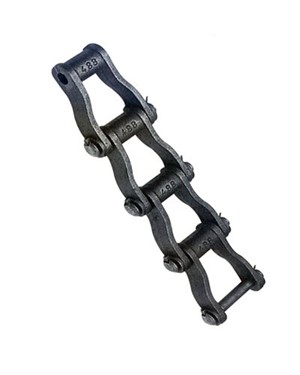 A pintle feeding system has a chain that essentially operates the same way as a conveyor belt.
A pintle feeding system has a chain that essentially operates the same way as a conveyor belt.
Finding your ideal spreader truck equipment just got easier.
Now that you know much more about the types of spreader truck equipment styles as well as which ice melt substances are best for various applications, you're one step closer to customizing the right spreader equipment for your needs.
Equipped with this knowledge, you're invited to look through the many listings on My Little Salesman to find a wide selection of
used plow and spreader trucks for sale as well as
detachable snow plows for sale available from several different dealers all over North America. Use the handy filtering tools to find the perfect equipment for your needs and budget. You've got this. 👍